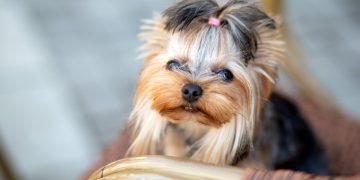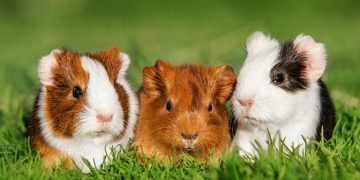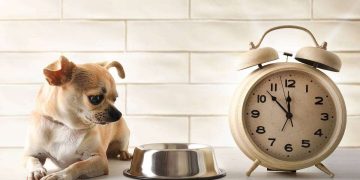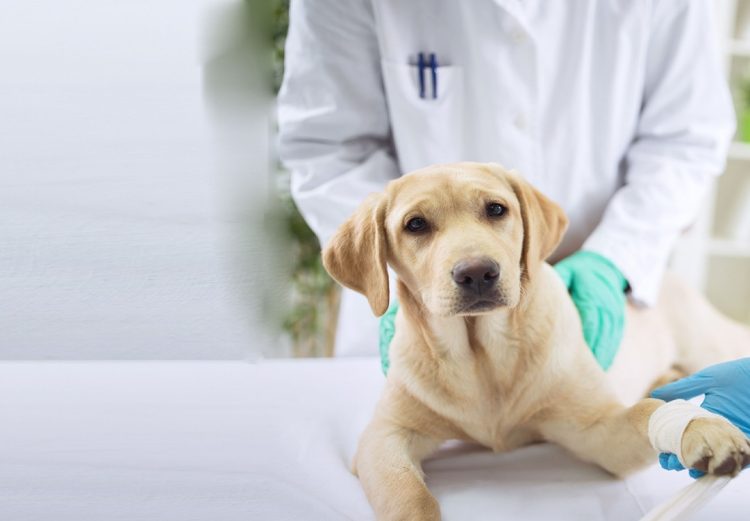As a pet owner, it’s important to regularly check your pet’s health to ensure that they are happy, comfortable, and free of any potential health issues. While routine visits to the veterinarian are essential, you can perform basic health checks at home to spot early signs of problems. This can help catch issues before they become more serious and costly to treat. Here’s how you can do a basic health check for your dog or cat at home:
1. Check Their Coat and Skin
A healthy pet typically has shiny, soft, and clean fur, and their skin should be free of redness, bumps, or sores. A coat that is dull, excessively greasy, or shedding more than usual could indicate an underlying issue.
Things to Look For:
- Coat condition: Look for changes in texture, thickness, or luster. Dull fur, increased shedding, or bald spots could be signs of nutritional deficiencies, stress, or a medical condition.
- Skin appearance: Check for dryness, flakes, bumps, sores, or signs of infection. Itchy, inflamed, or scabby skin can indicate allergies, parasites, or infections.
- Parasites: Look for fleas, ticks, or lice. Fleas can cause itching, hair loss, and skin irritation, while ticks can transmit diseases.
- Wounds: Check for cuts, abrasions, or injuries that might have been overlooked.
What to Do:
- Brush your pet regularly to keep their coat healthy and remove dirt, dead hair, and parasites.
- Use a pet-safe shampoo for cleaning, but avoid over-bathing as it can dry out their skin.
- If you notice skin problems or parasites, consult your veterinarian for treatment.
2. Inspect Their Eyes and Ears
Eyes and ears are key indicators of your pet’s health. Healthy eyes should be clear and bright, and their ears should be clean and odor-free. Any changes in these areas could indicate an issue that needs attention.
Things to Look For:
- Eyes: Check for signs of redness, cloudiness, discharge, or squinting. Excessive tearing or a yellowish tinge to the whites of the eyes can indicate infection or eye disease.
- Ears: Healthy ears should be clean, pink, and free of excessive wax or odor. A strong smell, redness, or discharge from the ears can be signs of an infection or ear mites, particularly in dogs.
What to Do:
- Gently wipe the area around their eyes with a clean, damp cloth to remove discharge or dirt.
- Check their ears weekly by lifting them gently and looking inside. If you notice an unusual smell or discharge, take them to the vet for an ear checkup.
- For cats, be aware of excessive pawing at the ears, which could indicate discomfort or infection.
3. Check Their Teeth and Gums
Dental health is essential for your pet’s overall well-being. Poor dental hygiene can lead to tooth decay, gum disease, and other health problems.
Things to Look For:
- Teeth: Check for tartar buildup, discoloration, broken teeth, or signs of plaque. Brownish-yellow plaque buildup at the base of the teeth may indicate early-stage periodontal disease.
- Gums: Healthy gums are pink and firm. If the gums appear red, swollen, or bleed when you touch them, your pet may have gum disease or gingivitis.
- Bad breath: A strong, foul odor from your pet’s mouth may be a sign of poor dental health, infection, or underlying medical issues like kidney disease.
What to Do:
- Brush your pet’s teeth regularly with a pet-safe toothbrush and toothpaste.
- Provide dental chews or toys to help keep their teeth clean and fresh.
- Schedule professional dental cleanings with your veterinarian to prevent plaque buildup and maintain oral health.
4. Monitor Their Weight and Body Condition
Maintaining a healthy weight is vital to your pet’s overall health. Obesity can lead to a variety of health issues, such as arthritis, diabetes, and heart disease. On the other hand, being underweight may indicate poor nutrition, illness, or stress.
Things to Look For:
- Ribs: You should be able to feel your pet’s ribs easily without pressing too hard. If you can’t feel them, your pet may be overweight. If the ribs are too prominent, your pet may be underweight.
- Waist: Look for a noticeable waistline behind the ribs. An overweight pet will have a round or bulging abdomen, while an underweight pet will appear very thin with no visible waist.
- Body Shape: Observe the overall shape of your pet’s body. Ideally, they should have an hourglass figure when viewed from above, with a tapering waist.
What to Do:
- Measure your pet’s food portions and avoid free-feeding to help manage their weight.
- Ensure that your pet gets regular exercise suited to their age and breed.
- Discuss with your vet about an appropriate feeding schedule and weight management plan if needed.

5. Check Their Paws and Claws
Healthy paws are essential for your pet’s mobility and comfort. Overgrown or infected claws and paw pads can cause pain, difficulty walking, or infections.
Things to Look For:
- Claws: Check your pet’s claws to make sure they are not too long. Overgrown claws can cause discomfort, infections, and even injury. Some pets require regular claw trimming, especially indoor cats.
- Paw Pads: Ensure that the pads of your pet’s feet are free from cracks, swelling, or signs of injury. Dry or cracked pads can indicate dehydration or underlying health problems.
- Foreign Objects: Check for any debris, such as sticks, stones, or burrs, stuck in between the toes or pads, which could cause irritation or infection.
What to Do:
- Trim your pet’s claws as needed, especially for indoor pets, to prevent overgrowth.
- Wipe their paws after walks to remove dirt, salt, or other irritants.
- Check for any signs of injury or infection and consult your vet if you notice anything unusual.
6. Observe Their Behavior and Energy Levels
A change in behavior or energy levels can be a clear sign that something is wrong with your pet’s health. Pets are often good at hiding discomfort, so any significant change should be taken seriously.
Things to Look For:
- Activity levels: If your pet is unusually lethargic or not engaging in their normal activities (e.g., playing, walking, or eating), it may indicate illness or pain.
- Behavioral changes: Sudden aggression, anxiety, or a change in sleeping patterns could point to underlying issues such as discomfort, stress, or health problems.
- Hiding: If your pet is hiding more than usual or avoiding interaction, this can be a sign that they are feeling unwell.
What to Do:
- Keep a close eye on their daily activities and note any changes in their routine.
- Provide a quiet, comfortable environment for rest, especially if they’re showing signs of fatigue.
- If behavior changes persist, it’s important to consult your vet to rule out illness or pain.
7. Monitor Their Urination and Defecation
Changes in your pet’s urination or bowel movements can be an early warning sign of health problems. Watch for irregularities in their bathroom habits.
Things to Look For:
- Urination: Increased or decreased frequency of urination, accidents in the house, or changes in the color or smell of urine can indicate a urinary tract infection, kidney problems, or other health issues.
- Defecation: Look for signs of diarrhea, constipation, or abnormal stool color (such as black, red, or yellowish stool), which can be signs of gastrointestinal issues, infections, or dietary problems.
What to Do:
- Monitor your pet’s bathroom habits and ensure they are not straining or experiencing discomfort.
- If you notice changes in their urination or defecation patterns, consult your vet for further evaluation and advice.
Conclusion
Performing basic health checks on your pet is an essential part of being a responsible pet owner. By regularly inspecting their coat, eyes, ears, teeth, weight, behavior, and bathroom habits, you can help catch potential health issues early and ensure your pet remains healthy and happy. While these checks are important, they should not replace regular veterinary visits. If you notice any concerning signs or symptoms, it’s always best to consult your veterinarian for professional advice and care.























































